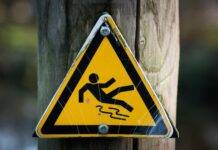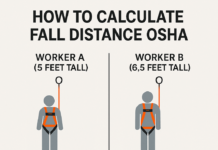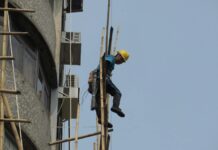
Fall Protection Plan: Safeguarding Against Height Hazards
Introduction to Fall Protection Plans
Fall protection is a crucial aspect of workplace safety, addressing the risks associated with working at heights. Across industries, organizations recognize the significance of implementing comprehensive fall protection plans to ensure the well-being of their employees and compliance with regulatory standards.
Importance of Fall Protection
The fundamental importance of fall protection cannot be overstated. Workplace falls are among the leading causes of occupational injuries and fatalities, emphasizing the need for proactive measures. Establishing a robust fall protection plan not only safeguards employees but also minimizes operational disruptions caused by accidents.
Legal Requirements and Regulations
Regulatory bodies mandate adherence to fall protection standards. Understanding and complying with these regulations, such as OSHA standards in the United States, form the backbone of an effective fall protection plan.
Components of a Fall Protection Plan
Creating an effective fall protection plan involves several key components that collectively mitigate risks and promote safety.
Risk Assessment
Identifying potential fall hazards within the workplace is the initial step. Conducting a thorough risk assessment helps in recognizing vulnerable areas and assessing the severity of risks.
Prevention Strategies
Implementing preventive measures is crucial. Strategies like guardrails, safety nets, and personal protective equipment (PPE) play pivotal roles in reducing fall-related incidents.
Training and Equipment
Equipping employees with the necessary training and proper equipment is essential. Training programs focusing on hazard awareness, equipment usage, and emergency response protocols significantly enhance safety.
Developing an Effective Fall Protection Plan
Crafting an efficient fall protection plan involves a structured approach addressing various facets of safety protocols.
Identifying Hazards
Identifying and evaluating potential fall hazards specific to the workplace enables targeted preventive measures.
Implementing Controls
Implementing controls involves deploying safety measures to eliminate or mitigate identified hazards effectively.
Creating Rescue Procedures
Incorporating detailed rescue protocols ensures prompt and effective response in case of an incident.
Training and Education for Fall Protection
Employee education and training are pivotal elements in maintaining a safe work environment.
Employee Awareness
Raising awareness among employees regarding fall hazards fosters a safety-conscious culture.
Proper Equipment Use
Training on the correct use of safety equipment enhances its effectiveness and reduces risks.
Emergency Response Training
Preparing employees to respond efficiently during emergencies contributes significantly to minimizing the impact of fall incidents.
Maintaining and Updating Fall Protection Plans
Regular reviews and updates are vital in ensuring the ongoing effectiveness of fall protection strategies.
Regular Inspections and Reviews
Scheduled inspections and reviews help in identifying evolving risks and implementing necessary adjustments.
Adapting to New Risks and Technologies
Staying abreast of new risks and technological advancements allows for the incorporation of innovative safety measures.
Case Studies Highlighting Successful Fall Protection Plans
Examining successful fall protection strategies in various industries provides valuable insights into effective implementation and outcomes.
Examples of Effective Strategies
Real-life examples showcasing successful strategies underscore the importance of a well-executed fall protection plan.
Real-life Scenarios and Outcomes
Highlighting scenarios and their outcomes emphasizes the tangible benefits of robust fall protection measures.
Common Challenges and Pitfalls in Fall Protection
Despite efforts, certain challenges hinder the effective implementation of fall protection plans.
Misconceptions and Mistakes
Addressing common misconceptions and rectifying mistakes is crucial in improving safety measures.
Overcoming Compliance Issues
Navigating compliance issues and ensuring adherence to regulations remains a persistent challenge.
A fall protection plan is crucial for ensuring the safety of individuals working at heights. Here's a basic structure you might consider:- Assessment of Risks: Identify areas where falls could occur. This includes evaluating the nature of work being done at heights, the condition of equipment, and the layout of the work environment.
- Hierarchy of Controls: Implement controls in a hierarchy:
- Elimination/Substitution: Whenever possible, eliminate the need to work at heights or substitute with safer methods.
- Engineering Controls: Install guardrails, safety nets, or use elevated work platforms to reduce the risk of falls.
- Administrative Controls: Implement procedures like warning signs, scheduled breaks, and restricted access to high-risk areas.
- Personal Protective Equipment (PPE): Harnesses, lanyards, and other fall arrest systems should be available and used when necessary.
- Training and Education: Ensure that all workers involved are properly trained in fall prevention, equipment usage, and emergency procedures. Regular refresher training may be necessary.
- Equipment Inspection and Maintenance: Establish a schedule for regular inspection and maintenance of fall protection equipment. Defective equipment should be immediately taken out of service.
- Emergency Response Plan: Develop a detailed plan outlining steps to be taken in the event of a fall. This includes rescue procedures and first aid protocols.
- Documentation and Record Keeping: Maintain detailed records of training sessions, equipment inspections, incident reports, and any corrective actions taken.
- Review and Improvement: Periodically review the effectiveness of the fall protection plan. Analyze incidents or near misses to identify areas for improvement.
Remember, this plan should be tailored to your specific work environment and adhere to local safety regulations. Additionally, involving workers in the development and implementation of the plan can significantly enhance its effectiveness.Conclusion
In conclusion, a comprehensive fall protection plan is indispensable in safeguarding against height-related hazards. By assessing risks, implementing preventive measures, providing thorough training, and staying updated with evolving technologies, organizations can foster a safe working environment while complying with regulations.
Work at Height Toolbox Talk Meeting
How to Make JSA for Work at Height Activity
How to Make HIRA on Work At Height?
Work at Height Basic Safety Knowledge
The Importance of Fall Protection
FAQs
1. How often should a fall protection plan be reviewed?
Regular reviews are crucial; aim for at least annual assessments and more frequent reviews if significant changes occur.
2. Are there industries where fall protection is especially critical?
Yes, industries like construction, roofing, and telecommunications have higher risks associated with working at heights.
3. Can technology completely eliminate fall risks?
While technology offers advancements, combining it with proper training and preventive measures is crucial for comprehensive safety.
4. What should be included in employee fall protection training?
Training should cover hazard identification, equipment usage, emergency response, and the importance of adherence to safety protocols.
5. How can small businesses implement cost-effective fall protection plans?
Small businesses can focus on basic preventive measures, employee education, and leveraging affordable safety equipment to initiate a comprehensive fall protection plan.
























